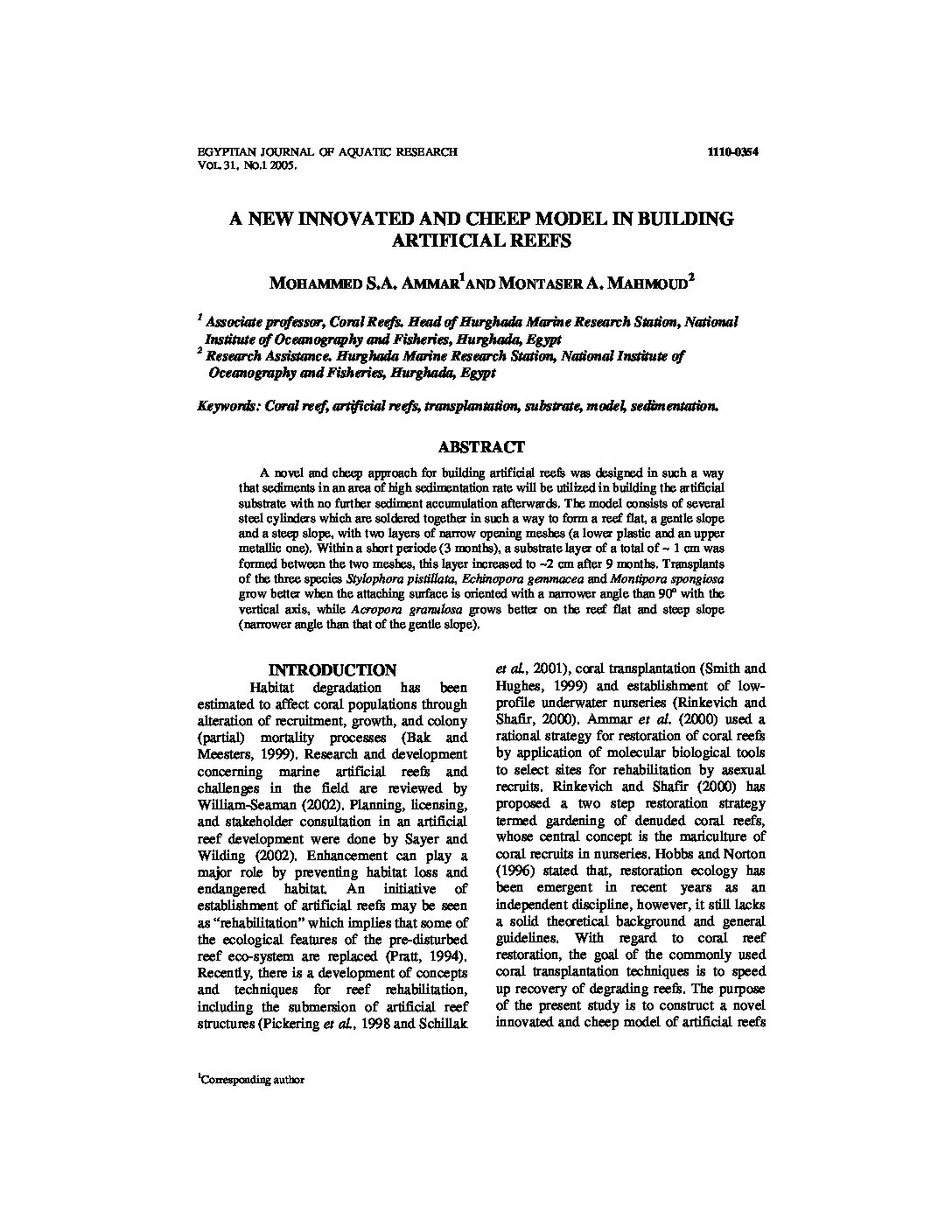Categories
vol-31THE JELLYFISH AURELIA AURITA (CNIDARIA:
SCYPHOMEDUSAE): ITS LIFE HISTORY STRATEGY,
MIGRATION ACTIVITY AND ITS IMPACT ON THE
ZOOPLANKTON COMMUNITY OF SUEZ CANAL, EGYPT
HAMED A. EL-SEREHY
Suez Canal University, Faculty of Science, Marine Science Department, Ismailia, Egypt
Keywords: Gelatinous plankton, Life span, Grazing Impact, Migration, Red Sea, Mediterranean,
Suez Canal
ABSTRACT
Suez Canal is the main connecting link between the Red Sea in the south and the
Mediterranean in the north. It crosses different lakes on its route from Port Said on the
Mediterranean Sea to Port Suez on the Red Sea. Jellyfishes form a major part of the macroplankton of the canal. The role of jellyfishes in general and Aurelia aurita (Linnaeus, 1881)
in particular in marine ecosystem of the Suez Canal is of interest not only biologically but
also socio-economically. During the present study, the life history of the common jellyfish
A. aurita (Linnaeus) in the canal was investigated by monthly sampling over 24 month
period from September 1999 to December 2001. Young medusae of 2-3 cm diameter occur
from February/March. Growth was rapid. Some specimens of this cohort reach 16 cm and
spawn by March/May and then decrease in size or die. Others reach a maximal size of 10
cm by September, when spawning takes place. A few number of mature individuals remain
after spawning in the next year and decrease in size. Release of ephyrae seams to be
induced by a lowering of ambient environmental temperature to below 16
OC, with peak of
release occurring in December/February. A drop in temperature may be the cue for
strobilation in the canal. A. aurita (Linnaeus) seems to be an immigrant plankter to the Suez
Canal, and much interest was focused upon which end of the canal these organisms
invading the opposite sea. However, the canal with its lakes should also be considered as a
substantial permanent habitat in its own right, and one can not consider the canal only as a
funnel or corridor through which animals pass like ships from one sea to the other. A. aurita
(Linnaeus) enters Suez Canal from the south via water currents; to do so it would need to
be carried the 20 km or so along the canal from the Gulf of Suez into the Bitter Lakes, then
pass across these lakes before being carried the further 12 km or so along the canal into
Timsah Lake. Transport of A. aurita (Linnaeus) southward along the canal from
Mediterranean is unlikely to take place during most seasons of the year against water flow,
but is possible only during the brief period of reversal of flow. Because the main part of the
80 km or so from the Red Sea is canalized, passive transport of A. aurita (Linnaeus) by
water currents from the north could occur within a week even at the low speed of ½
km/hour. Moreover, conditions on the migratory route of Suez Canal, in either direction,
are likely to determine the success of passive transport of A. aurita (Linnaeus). Preliminary
analysis of predation rate indicates that the immigrant A. aurita (Linnaeus) may lead to a
sharp decrease in the density of the cyclpoid Oithona nana (Giesbrecht, 1892); the calanoid
Paracalanus crassirostris (Dahl, 1894) and the harpacticoid Euterpina acutifrons (Dana,
1848) during winter and spring, but does not markedly affect the other copepods, which
remain abundant throughout the year. Because of this and because of the heavy predation of
A. aurita (Linnaeus) on diatom grazer copepods, large quantities of diatoms remain on the
bottom of the canal, decompose, and are mineralized by bacteria. As a result, only a small
portion of the primary production is transferred to fish production in the Suez Canal.







